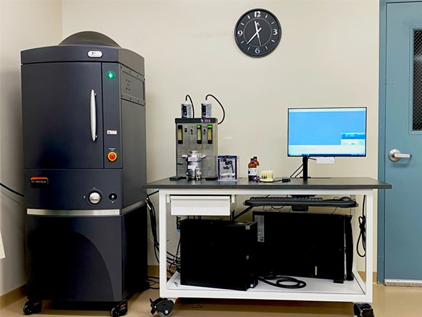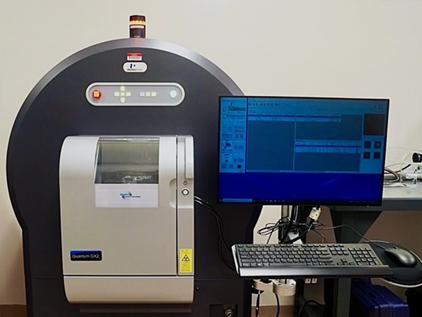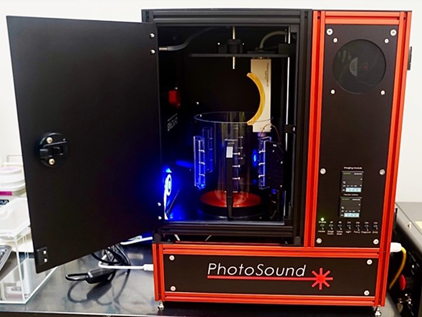- Home
- Research
- Shared Resources and Core Facilities
- Small Animal Imaging
Shared Resources and Core Facilities
Small Animal Imaging
The Small Animal Imaging Center is a shared resource available to members of The University of Kansas Cancer Center, as well as scientists at other research and industry institutions. This shared resource provides access to top-of-the-line multimodal imaging modalities. Instruments utilized by the Small Animal Imaging Center range from photoacoustic imaging and computed tomography to optical tomography with fluorescence and bioluminescence capabilities.
The Small Animal Imaging Center is maintained with the materials necessary to operate each instrument. A biological cabinet, independent anesthesia equipment for each instrument and the necessary materials for their optimal performance such as oxygen, isoflurane and cleaning supplies are regularly checked and re-stocked preventing any delays due to the usage of consumables. The Small Animal Imaging staff is trained to use each instrument effectively and provides training for new users.
The Small Animal Imaging Center is maintained with the materials necessary to operate each instrument. A biological cabinet, independent anesthesia equipment for each instrument and the necessary materials for their optimal performance such as oxygen, isoflurane and cleaning supplies are regularly checked and re-stocked preventing any delays due to the usage of consumables. The Small Animal Imaging staff is trained to use each instrument effectively and provides training for new users.
Equipment
This preclinical imaging center is designed to enable true multispecies imaging, live animal imaging, and the use of state-of-the-art imaging and analysis software to offer unique insights into barriers to drug delivery, tumor biophysics, and the detection of (micro)metastases. The goal is to provide faster, higher-resolution imaging for animals and, ultimately, humans. Stefan H. Bossmann, PhD
Getting Started
All users must complete the required Animal Training through Laboratory Animal Resources Following completion of Animal Training, user training on the instrumentation can be scheduled directly with the Small Animal Imaging Center Macy Payne, PhD, facility manager. Internal users must create an iLab account for scheduling. Email Dr. Payne for instructions.
For all live animal imaging, the necessary Institutional Animal Care and Use Committee/Animal Care and Use Protocol approval must be obtained prior to initiation of any experiments. Users are asked to supply a copy of their IACUC/ACUP to Core staff prior to scheduling the first imaging session with live animals.
For all live animal imaging, the necessary Institutional Animal Care and Use Committee/Animal Care and Use Protocol approval must be obtained prior to initiation of any experiments. Users are asked to supply a copy of their IACUC/ACUP to Core staff prior to scheduling the first imaging session with live animals.
Request our Services
To learn more and utilize the Small Animal Imaging Center, contact one of its team members.Cite the cancer center support grant
This resource is funded by The University of Kansas Cancer Center Support Grant (CCSG) awarded by the National Cancer Institute (P30 CA168524). Publications that have utilized facility resources, services or scientific data generated by the resource should acknowledge the resource and cite the NCI CCSG grant.
Learn more
Interested in becoming a cancer center member?
To apply, click here. Applications are accepted throughout the year. Contact Lisa Harlan-Williams at lharlan-williams@kumc.edu for more information regarding membership.


